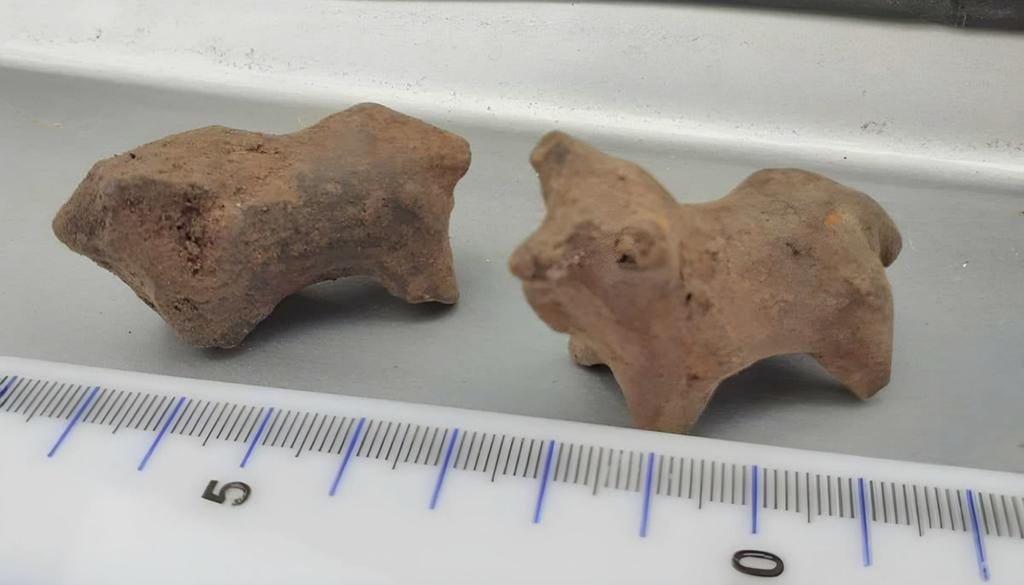Archaeologists in western Ukraine have uncovered two clay bull figurines dating back to the Early Iron Age near the Metropolitan Chambers in Krylos, a historic village close to the city of Halych in the Ivano-Frankivsk region.
 One of the bull figurines unearthed near Halych. Credit: Ukrinform
One of the bull figurines unearthed near Halych. Credit: Ukrinform
The figurines were unearthed during archaeological excavations conducted near a defensive rampart close to the Metropolitan Chambers. Researchers from the Ancient Halych National Reserve, in collaboration with the Insтιтute of Archaeology of the National Academy of Sciences of Ukraine and Vasyl Stefanyk Precarpathian National University, have been systematically studying the area, which is a key site within the Ancient Halych National Reserve. Krylos, located about 3 miles south of modern Halych, is rich in archaeological, architectural, and historical remains, making it a focal point for understanding the region’s past.
Andrii Fihol, a junior researcher at the Archaeology Department of the Ancient Halych National Reserve, spoke to Ukrinform about the unexpected find:
“We were working near the defensive rampart in the village of Krylos, near the Metropolitan’s Chambers. We expected to find fragments from the Princes’ period but instead came across a cultural layer from the Early Iron Age. We found two clay figurines of bulls, which testify to the agricultural cult of that time. People created what they saw and used in their household activities.”
 The figurines were unearthed near a defensive rampart close to the Metropolitan Chambers. Credit: Ukrinform
The figurines were unearthed near a defensive rampart close to the Metropolitan Chambers. Credit: Ukrinform
This era, which began in the 12th century BCE in Ukraine, marked a transition in human history with the widespread use of iron for tools and weapons. It is particularly ᴀssociated with the Scythians and Sarmatians, nomadic cultures known for their metallurgical advancements and agricultural practices.
In addition to the figurines, the team also unearthed a wheel from a cart, which Fihol described as possibly the only sculpture of its kind from this period. These discoveries emphasize the importance of agriculture in the cultural and spiritual practices of the time.
The Metropolitan Chambers, an 18th-century architectural monument, served as the residence of Galician metropolitan bishops and now houses the Museum of the History of Ancient Halych. Some researchers speculate that the structure was built on the site of a princely palace, although this theory lacks archaeological confirmation. The museum will add the newly discovered artifacts to its collections, preserving them for future study and public display.
The discovery adds to a long history of archaeological finds in Krylos, a site that has been occupied for over 7,000 years. Systematic research has uncovered evidence of numerous archaeological cultures dating back to 5500 BCE, reflecting the region’s significance as a cultural and historical hub.





